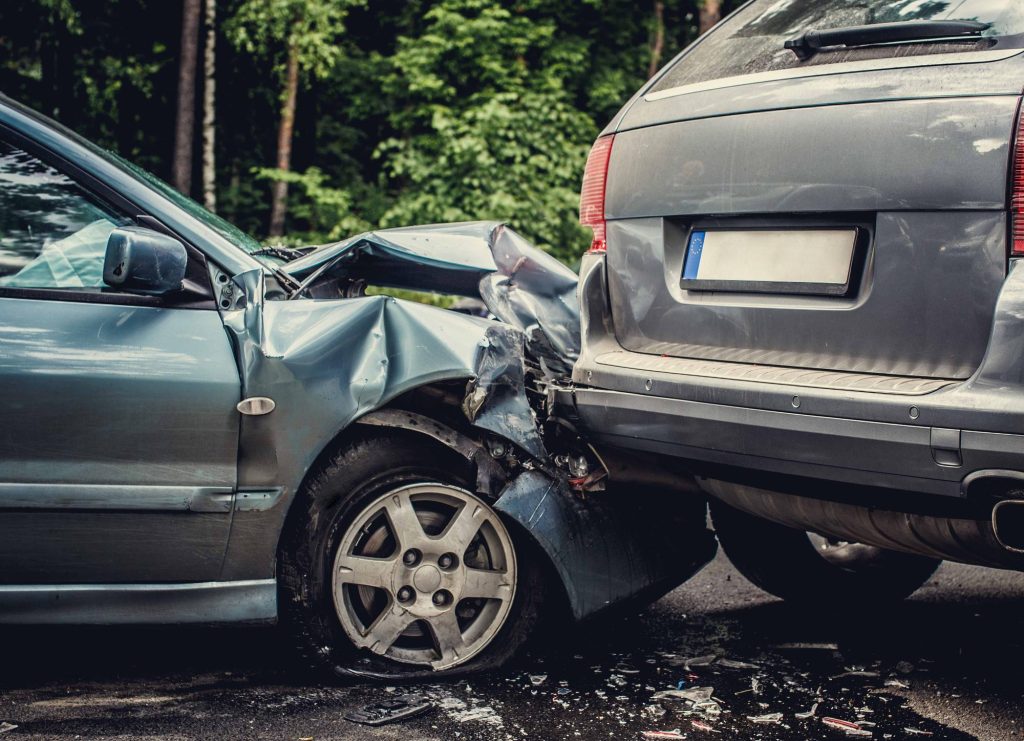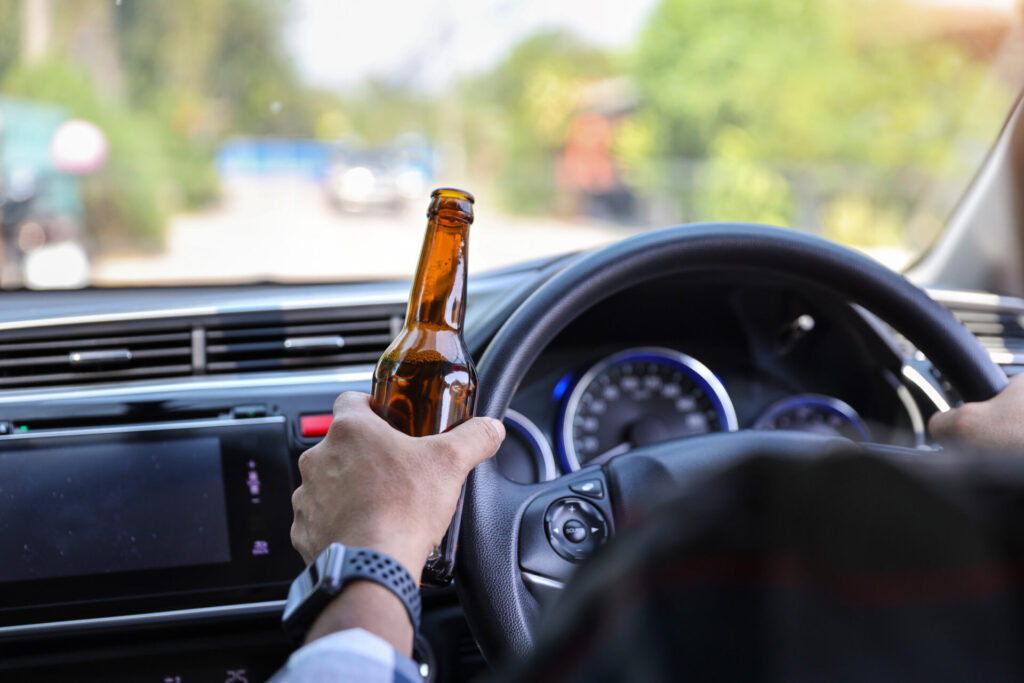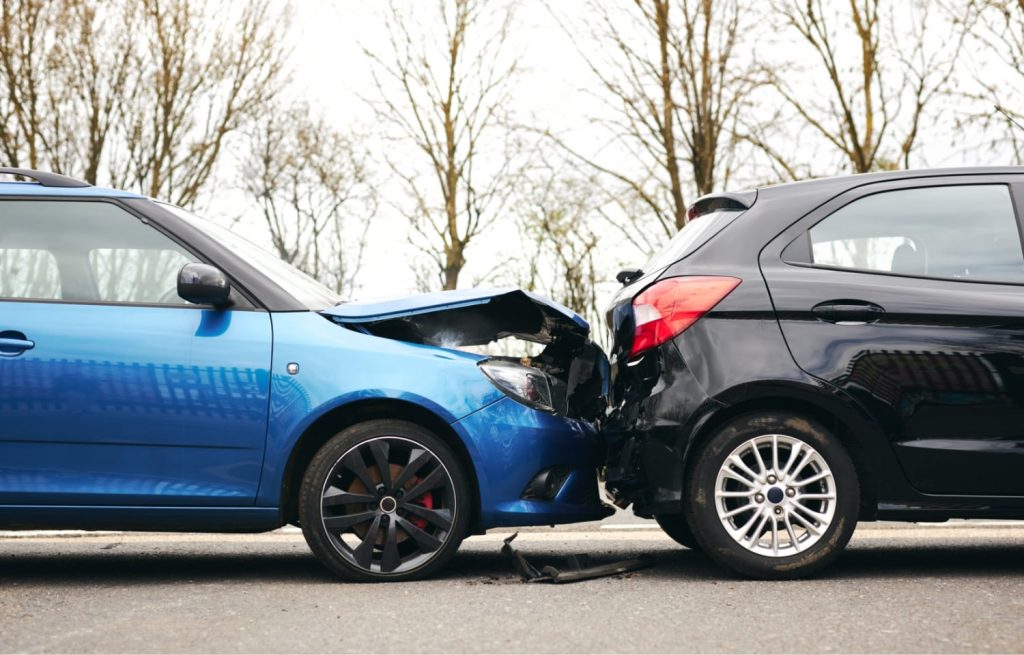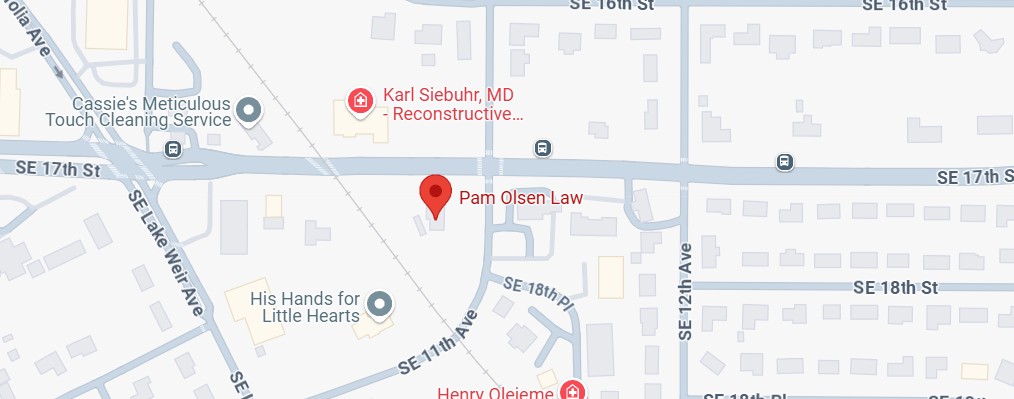Key Takeaways
- Scale of the Problem: Rear-end collisions represent 28% of all crashes nationwide and are the #1 cause of auto insurance claims, with Florida averaging 909 crashes per day in 2024.
- Distracted Driving is the Leading Cause: Mobile device use and other distractions are the primary culprit in rear-end collisions, significantly reducing reaction time and situational awareness.
- Tailgating Creates Dangerous Conditions: Following too closely is a major factor – Florida recommends maintaining at least a 4-second following distance, which many drivers ignore.
- Speed Kills Reaction Time: Speeding reduces critical response time and requires 3-4 car lengths to brake when traffic suddenly stops, making collisions more likely and severe.
- Fault Usually Falls on the Rear Driver: In almost all scenarios, the driver who strikes from behind is considered at fault, though exceptions exist for faulty brake lights, illegal stops, or brake checking.
- Even Low-Speed Crashes Cause Serious Injuries: Collisions under 10 mph can still result in whiplash, head injuries, back problems, and other significant medical issues requiring immediate attention.
- Weather Significantly Increases Risk: 76% of weather-related accidents occur on wet pavement, with 46% happening during rain, due to reduced traction and visibility.
- Florida’s Insurance Minimums Are Often Inadequate: The required $10,000 PIP and PDL coverage frequently falls short of covering serious rear-end collision damages and medical expenses.
- Comparative Negligence Law Protects Victims: Even if partially at fault, injured parties can still recover damages under Florida law, though the amount is reduced by their percentage of fault.
- Prevention is Key: Maintaining safe following distances, avoiding distractions, proper vehicle maintenance, and adjusting for road conditions can significantly reduce rear-end collision risk.
If you’ve been rear-ended in Ocala, you’re not alone. These accidents happen every single day across Florida, and understanding why they occur can help protect you and your loved ones. As a personal injury attorney in Ocala who has spent 34 years fighting for accident victims, I’ve seen firsthand how devastating these crashes can be – even at low speeds.
What might seem like a minor fender-bender can result in serious injuries, overwhelming medical bills, and months of recovery time. The financial burden alone can be crushing for families already dealing with the physical and emotional trauma of an accident. That’s why it’s crucial to understand your rights and know what steps to take immediately following a rear-end collision.
Understanding Rear-End Collisions
A rear-end collision occurs when the front-end of one vehicle strikes the rear-end of another vehicle that is stopped or traveling at a slower speed. While some people think these are just minor fender-benders, that’s not always the case. High-speed crashes can be catastrophic or even deadly.
Most rear end collisions are the most common type of car accidents in Florida and represent approximately 28% of all crashes nationwide according to NHTSA data. They’re also the number one cause of auto insurance claims. In our state alone, we’re dealing with serious numbers that should concern every driver. When accidents happen, the consequences can be life-changing for everyone involved.
2024 Florida Traffic Statistics
According to the Florida Highway Safety and Motor Vehicles (FLHSMV), Florida has experienced significant crash statistics in 2024:
| Statistic | Number |
| Total crashes | 331,903 |
| People injured | Data pending final report |
| Total fatalities | Data pending final report |
| Fatal accidents | Data pending final report |
| Average crashes per day | 909 |
Note: Complete 2024 statistics are still being compiled by FLHSMV. Historical data shows Florida consistently ranks among the top states for total crashes and fatalities nationwide.
Primary Causes of Rear-End Collisions
1. Distracted Driving – The Leading Culprit
Distracted driving has become the leading cause of car accidents in Florida. Any activity that takes a driver’s hands off the wheel, eyes off the road, or focusing away from driving creates danger for everyone.
Mobile Device Distraction is particularly concerning. Studies consistently show that mobile device use is a major contributing factor to rear-end collisions because:
- It occurs consistently during every drive
- It multiplies the negative effects of other risky behaviors
- It significantly reduces reaction time and situational awareness
Driver error from distracted driving disrupts normal traffic flow and puts everyone at risk. The National Safety Council reports that distracted driving is involved in numerous crashes each year.
Common Forms of Distracted Driving Include:
- Texting while driving (a primary offense under Florida’s Wireless Communications law)
- Eating and drinking while driving
- Applying makeup or adjusting the radio
- Fiddling with vehicle controls or navigation systems
- Conversing with passengers
- Checking on children or pets in the backseat
For instance, a driver on a cellphone may not realize traffic is slowing down until it’s too late, potentially losing control of their vehicle. Among teenage drivers, the primary cause of distracted driving accidents is often distractions from other passengers, not just cell phone use. Most rear end crashes happen when drivers fail to follow basic traffic rules about maintaining attention.
2. Tailgating – Following Too Closely
Tailgating occurs when a driver follows the vehicle ahead too closely. This dangerous behavior makes it difficult for the following driver to stop in time to avoid an accident, especially if the leading vehicle stops suddenly.
Florida law requires motorists to maintain a safe following distance. The Florida Driver Handbook recommends a minimum four-second following distance, increasing during heavy traffic or poor weather conditions. However, many drivers ignore this basic safety rule, leading to rear end car accident situations.
Factors Contributing to Tailgating Accidents:
- Insufficient space “cushion” between vehicles
- Inability to stop in time for sudden braking
- Increased risk during stop-and-go traffic conditions
- Aggressive driving behaviors
3. Speeding – Reducing Critical Reaction Time
Speeding means exceeding the posted speed limit or driving too fast for current road and weather conditions. This dangerous behavior significantly reduces the time a driver has to respond and stop safely if traffic halts.
How Speeding Increases Rear-End Collision Risk:
- Requires three to four car lengths to brake when traffic suddenly halts
- Reduces available reaction time
- Makes it harder to navigate turns and curves
- Increases crash severity and injury potential
Speeding often worsens the impact of rear-end accidents, leading to more severe injuries and greater vehicle damage. When you’re running late, remember that arriving a few minutes late is better than not arriving at all.
4. Impaired Driving – Alcohol, Drugs, and Fatigue
Operating a vehicle under the influence of drugs and/or alcohol makes it much harder to drive safely. In Florida, a driver with a blood alcohol content of .08% or higher is considered legally impaired.
Types of Impairment:
Drunk Driving: Severely impairs reaction time, attention, motor skills, and judgment, often leading to high speeds and tragic accidents.
Drowsy Driving: Fatigue impairs decision-making, slows thought processes and reaction time, and affects judgment and vision. This can cause drivers to veer into other lanes or fail to notice stopped traffic ahead.
Drug Impairment: Both prescription and illegal drugs can affect a driver’s ability to operate a vehicle safely.
Contributing Factors to Rear-End Collisions
Sudden or Unexpected Stops
These occur when the vehicle ahead stops abruptly, perhaps due to an unexpected obstacle, pedestrians, or traffic signals. In such cases, both the front and rear drivers may share blame under Florida’s comparative negligence rule.
Vehicle Malfunctions and Poor Maintenance
Common Vehicle Issues Leading to Rear-End Crashes:
- Faulty brakes or brake lights
- Worn tires with poor traction
- Non-working tail lights or turn signals
- Steering problems
Regular vehicle maintenance helps prevent breakdowns or mechanical failures that can lead to rear-end collisions. If you can’t stop safely or other drivers can’t see your intentions, accidents become much more likely.
Poor Weather Conditions and Reduced Visibility
Florida’s weather can change quickly, creating dangerous driving conditions. Rain, fog, high winds, and flooding can reduce pavement friction, traction, visibility, and maneuverability.
Weather-Related Accident Statistics:
- 76% of weather-related accidents occur on wet pavement
- 46% happen during rain
- Reduced visibility makes it harder to see hazards and react promptly
Traffic Signal Violations
Not coming to a full stop at stop signs or running red lights can easily result in intersection accidents. Local data from Ocala personal injury attorneys indicates that many rear-end collisions occur at stoplights when drivers fail to notice stopped vehicles ahead.
Drivers running red lights caused over 900 deaths and 116,000 injuries nationally in 2020. These accidents are often completely preventable with proper attention to traffic signals.
Road Hazards and Night Driving
Unexpected obstacles on the road, such as potholes, debris, or animals, can force sudden stops. The risk of a fatal car accident is three times higher at night than during the day due to reduced visibility, compromised color recognition, and depth perception issues.
Ocala and Marion County Specific Data
Recent Incidents and Trends
Marion County has seen concerning traffic safety trends:
- A woman was trauma-alerted after rear-ending a school bus in November 2023
- Pedestrian deaths rose to 21 in Marion County in 2024
- Regular traffic incidents occur on major roadways including I-75 and local arterials
Law Enforcement Response
Marion County crashes are investigated by several agencies:
- Marion County Sheriff’s Office
- Ocala Police Department
- Florida Highway Patrol
- Other local agencies
Most Dangerous Periods
The FLHSMV identifies the “100 deadly days of summer” (Memorial Day to Labor Day) as the most dangerous period for crashes in Florida, with May through September showing elevated risk levels.
Determining Fault and Legal Implications in Florida
General Rule of Fault
In almost all scenarios in Florida, the driver that strikes the car in front of them is determined to be at fault for a rear-end accident. This is because they are considered to be following too closely or unable to stop in time.
Exceptions to Fault
However, there are exceptions:
- Faulty brake lights on the leading vehicle
- Illegal or sudden stops by the front driver
- Intentional “brake checking” or road rage incidents
- When the front driver reverses into another car
- Multi-vehicle chain reaction crashes
Comparative Negligence Law
Florida follows a comparative negligence law. This means an injured party can still recover damages even if found partially at fault, though their recovery amount will be reduced by their percentage of fault. An experienced attorney can help negotiate to minimize the percentage of fault attributed to their client.
Common Injuries from Rear-End Collisions
Even at speeds under 10 mph, rear-end crashes can cause serious injuries that require immediate medical attention:
| Injury Type | Description |
| Whiplash | Most commonly reported injury from rear-end crashes |
| Head injuries | Including traumatic brain injury and concussions |
| Back injuries | Including herniated discs and spinal problems |
| Facial trauma | From broken glass or airbag deployment |
| Broken bones | Especially ribs, arms, and pelvis |
| Soft tissue injuries | Sprains, strains, and ligament damage |
| Spinal cord injuries | In severe cases, can cause permanent disability |
These injuries can result in significant medical expenses, lost wages, and long-term discomfort. Many people experience anxiety about driving after being involved in a rear-end collision. When you need to seek compensation for these injuries, having proper documentation of your medical treatment is essential.
Prevention and Safety Tips
Drivers can take proactive measures to prevent rear-end collisions:
Maintain Safe Following Distance
Leave enough space (at least 3-4 seconds) between your vehicle and the one ahead to react to sudden stops. In heavy traffic or poor weather conditions, increase this distance even more.
Avoid Distractions
Focus on the road at all times. Put your phone away, finish eating before driving, and avoid other activities that take your attention away from driving.
Proper Vehicle Maintenance
Regularly check brakes, tires, lights, and other systems to ensure they’re in good working condition. Replace worn brake pads and ensure your brake lights work properly.
Adjust for Conditions
Slow down and exercise extra caution in bad weather, heavy traffic, or poor road conditions. Use headlights for increased visibility, even during the day.
Signal Your Intentions
Use turn signals and brake lights to clearly communicate your intentions to other drivers. Give other motorists enough time to react to your actions.
Legal Options After a Rear-End Collision
If you’ve been injured in a rear-end collision, you have legal options. Florida’s no-fault insurance system requires drivers to carry minimum coverage of $10,000 in personal injury protection (PIP) and property damage liability (PDL). However, this coverage is often insufficient for serious rear-end collision damages.
When to Seek Legal Representation
You should consult with an Ocala car accident lawyer if:
- You’ve suffered significant injuries
- Medical bills exceed your insurance coverage
- You’ve lost wages due to your injuries
- The other driver was clearly negligent
- Insurance companies are offering inadequate settlements
A personal injury lawsuit may be necessary when insurance settlements don’t cover your full damages. Remember, accidents happen, but you shouldn’t have to bear the financial burden when someone else’s negligence caused your injuries.
What Financial Compensation May Include
- Medical expenses (current and future)
- Lost wages and reduced earning capacity
- Property damage to your vehicle
- Pain and suffering
- Mental anguish and emotional distress
The National Safety Council estimates that the average economic cost of a rear-end collision injury is substantial, not including pain and suffering damages.
Why Choose Experienced Legal Representation
At my law firm, we understand that when you’re injured, your primary goal should be healing, not fighting with insurance companies. With 34 years of experience handling personal injury cases, I’ve seen how insurance companies try to minimize payouts to accident victims.
We work on a contingency fee basis, which means you don’t pay unless we win your case. We’re here for you 24 hours a day, seven days a week, and we’ll fight vigorously to ensure you receive maximum compensation for your injuries.
Remember, you can love your lawyer and love your results. We treat every client with the utmost respect and integrity while standing up against powerful insurance companies to defend your legal rights.
Take Action Today
The combination of distracted driving, inadequate following distances, and excessive speeds creates a dangerous environment that results in over 900 crashes daily across Florida. By understanding these common causes and taking preventive measures, we can all work together to make our roads safer for everyone.
Don’t let negligent drivers get away with causing your injuries. Call us today, and let’s start your journey toward justice and fair compensation. Remember, accidents happen, but with the right legal representation, you can seek compensation for your injuries and hold responsible parties accountable.
 CALL US NOW
CALL US NOW




